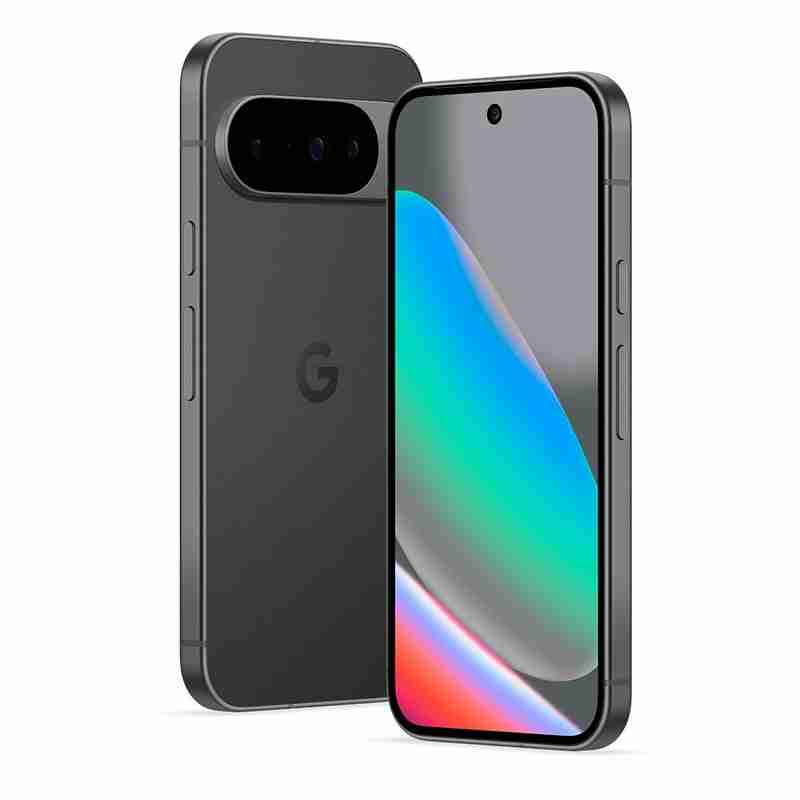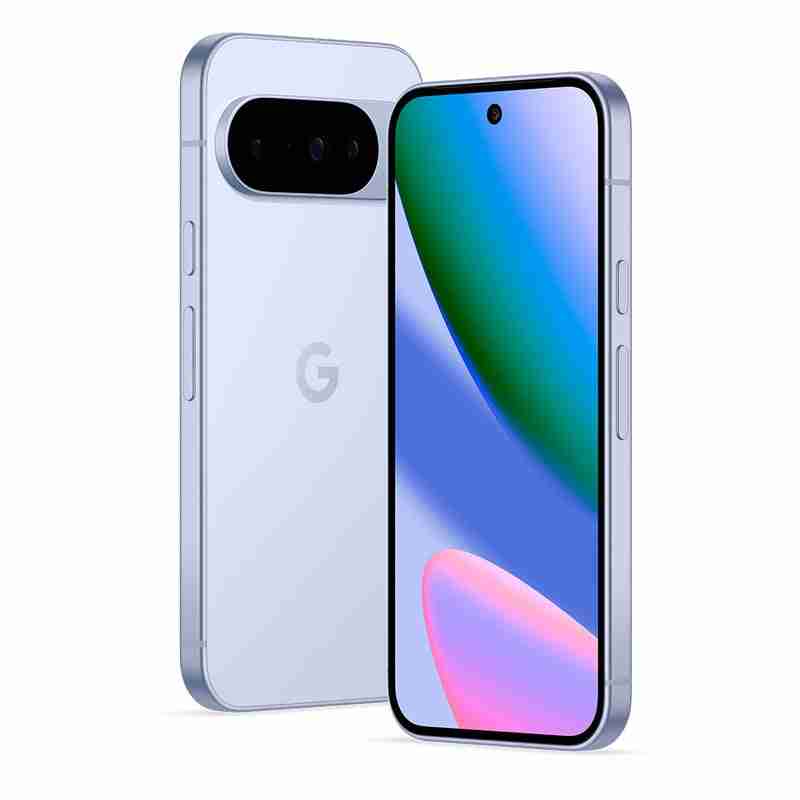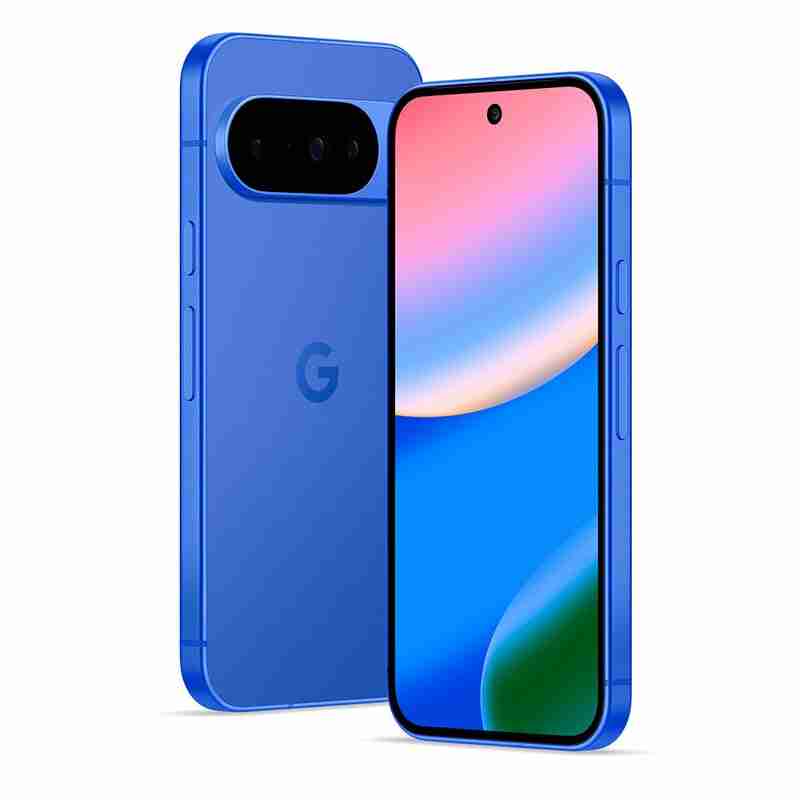Pixel 10 vs iPhone 16: The $800 flagship that schools Apple

Google’s Pixel 10 is now official, and it’s ready to challenge Apple’s iPhone 16 head-on. These are the standard, base flagship models in their respective lineups, both targeting the $799 price range. This year, however, Google seems determined to go beyond just competing — it’s pushing into areas where Apple’s base iPhone still feels stuck.
The Pixel 10, in contrast, debuts Google’s first fully custom Tensor G5 chip, a brighter 120Hz OLED screen, a new triple-camera system with a 5x telephoto, and Google’s most ambitious wave of AI features yet. It also packs a much larger battery and brings Qi2 magnetic charging with Google’s new Pixelsnap accessories.
Pixel 10 vs iPhone 16 differences:
| Pixel 10 | iPhone 16 |
|---|---|
| Tensor G5 | A18 Bionic |
| 6.3” OLED, 120Hz, 3,000 nits peak | 6.1” OLED, 60Hz, 2,000 nits peak |
| Triple cameras with 5x telephoto | Dual cameras, no telephoto |
| Advanced AI features | Basic AI features |
| 4,970 mAh battery | 3,561 mAh battery |
| 30W wired charging 15W Qi2 magnetic wireless |
20W wired charging 25W MagSafe magnetic wireless |
Table of Contents:
- Design
- Display
- Performance
- Camera
- Battery
- Specs
- Summary
Read more:
- iPhone 17 vs Pixel 10
- Pixel 10 vs Galaxy S25
- Pixel 10 vs Pixel 10 Pro
Design and Size
The iPhone 16 is much more compact
Both phones are built to flagship standards: aluminum frames, toughened glass, and IP68 dust/water resistance. Apple uses its second-gen Ceramic Shield on the iPhone 16, while Google relies on Gorilla Glass Victus 2.
| Pixel 10 | iPhone 16 |
|---|---|
|
Thickness 8.6 mm |
Thickness 7.8 mm |
|
Dimensions 152.8 x 72 |
Dimensions 147.6 x 71.6 |
|
Weight 204 grams |
Weight 173 grams |
The Pixel 10 is heavier and thicker, partly to house a larger 4,970 mAh battery and magnets for Qi2 magnetic charging — powering Google’s new Pixelsnap ecosystem of accessories like a magnetic charger and ring stand.
Apple kept the iPhone 16 compact and added two new buttons: the Capture Control button for zoom and exposure tweaks, and the Action button from the Pro models. Both enhance physical interaction, though the Capture Control’s placement can feel awkward.

Pixel 10 in Lemongrass

Pixel 10 in Obsidian

Pixel 10 in Frost

Pixel 10 in Indigo
Pixel 10 colors include Obsidian, Indigo, Frost, and Lemongrass, while iPhone 16 colors consist of Pink, Teal, Ultramarine, White, and Black.
Display Differences
The Pixel 10 clearly outclasses the iPhone 16 here. Its 6.3-inch OLED runs at 120Hz and hits up to 3,000 nits peak brightness — one of the brightest displays in any phone. The iPhone 16 sticks with a 6.1-inch OLED at just 60Hz. In our tests, its brightness reached ~1,012 nits, well short of the Pixel.
| Pixel 10 | iPhone 16 |
|---|---|
|
Size 6.3" |
Size 6.2" |
|
Brightness 3000 nits (peak) |
Brightness 2000 nits (peak) |
Biometrics-wise, the Pixel 10 uses an ultrasonic fingerprint scanner and face unlock, while the iPhone 16 continues with Face ID, which remains the gold standard for security and reliability.
Performance and Software
The Pixel is probably less powerful, but it can do things the iPhone can't
The iPhone 16 is powered by the A18 Bionic, built on TSMC’s N3E 3nm node. It delivers massive CPU and GPU gains, making it the most powerful mobile chip available today. Games and pro apps run effortlessly, and Apple’s thermal structure helps sustain performance.
| Pixel 10 | iPhone 16 |
|---|---|
|
Chip Google Tensor G5 |
Chip Qualcomm Snapdragon 8 Elite |
|
Process 3nm |
Process 3nm |
|
RAM, Storage 12/128GB 12/256GB LPDDR5X RAM Zoned UFS |
RAM, Storage 8/128GB 8/256GB LPDDR5X RAM NVMe |
AI is where the Pixel separates itself. Features include:
- Magic Cue: proactive suggestions (e.g., surfacing your flight info when calling the airline).
- Gemini Live: visual AI that overlays help on your screen or camera view.
- Take a Message: transcribes declined/missed calls and offers suggested actions.
- Pixel Journal and NotebookLM integration for smarter productivity
Apple Intelligence is still rolling out. Some features (like improving text or image generation) are available in iOS 18.1, but Siri’s long-promised upgrade has been delayed into 2026 (some reports even claim 2027).
Camera
The base iPhone could use a telephoto camera
For years, Apple has played it safe with a dual-camera setup on its base iPhones, while Google’s standard Pixels were limited in versatility too. That changes in 2025: the Pixel 10 finally gains a dedicated telephoto lens, giving it true triple-camera flexibility at the entry flagship tier. The iPhone 16, meanwhile, continues with just a wide and ultra-wide combo, betting instead on refinements like Spatial Video for Vision Pro.
| Pixel 10 | iPhone 16 |
|---|---|
|
Main 48 MP, f/1.7 1/2" sensor size |
Main 48 MP, f/1.6 1/1.56" sensor size |
|
Ultrawide 13 MP, f/2.2 1/3.1" sensor size |
Ultrawide 12 MP, f/2.2 Unknown sensor size |
|
Telephoto 10.08 MP, f/3.1 5X zoom 1/3.2" sensor size |
Telephoto None |
Apple added Spatial Video support for Vision Pro, but the iPhone 16 still doesn't come with a telephoto versatility. There's the iPhone 16’s Capture Control button helps switch zoom/exposure modes quickly, but as we said earlier — it's not exactly comfortable.
Google layers in AI:
- Camera Coach: real-time tips for better framing, lighting, and angles.
- Auto Best Take: analyzes up to 150 frames for the best group shot.
- C2PA Content Credentials: embedded photo authenticity.
Apple still excels in video stabilization and color accuracy, but Google’s 5x zoom lens and AI-driven editing give the Pixel 10 a big leap in versatility.
Battery Life and Charging
Apple's MagSafe system is no longer one of a kind
The Pixel 10 has a huge battery capacity of 4,970 mAh vs the iPhone 16’s 3,561 mAh. Google claims 30 hours on a single charge, and I have a feeling it would outlast the iPhone by a wide margin.
| Pixel 10 | iPhone 16 |
|---|---|
|
Battery size 4,970 mAh |
Battery size 3,561 mAh |
|
Charging speeds 30W wired 15W wireless charging USB-C 3.2 |
Charging speeds 25W wired 15W wireless charging USB-C 2.0 |
The Pixel 10 is the first major Android phone to support Qi2 magnetic wireless charging with Pixelsnap accessories, offering MagSafe-like convenience on Android. Apple’s MagSafe remains excellent at 25W, but the Pixel now finally matches that feature.
Specs Comparison
Here's a quick overview of the Pixel 10 vs iPhone 16 specs:
| Pixel 10 | iPhone 16 |
|---|---|
|
Size, weight 152.8 x 72 x 8.6 mm, 204 g |
Size, weight 147.6 x 71.6 x 7.8 mm, 173 g |
|
Screen 6.3" OLED 120Hz |
Screen 6.1" OLED 120Hz |
|
Processor Tensor G5 3nm |
Processor A17 Bionic 3nm |
|
Versions: 12/128GB 12/256GB --- |
Versions: 12/128GB 12/256GB 12/512GB |
|
Cameras: 48 MP main 13 MP ultra 10.8 MP 5X zoom 10.5 MP front |
Cameras: 48 MP main 12 MP ultra --- 24 MP front |
|
Battery: 4,970 mAh |
Battery: 3,561 mAh |
|
Charging: USB-C 30W wired 15W Qi2 magnetic wireless |
Charging: USB-C 25W wired 25W MagSafe magnetic wireless |
Summary
The iPhone 16 is a powerhouse of performance with the A18 Bionic chip and exceptional video quality, but it feels conservative. A 60Hz screen, dual cameras, and a modest battery were weaknesses in 2024, and even more so in 2025.
The Pixel 10, meanwhile, is more ambitious. Its larger battery, 120Hz OLED display, triple cameras with 5x zoom, and deep AI features like Magic Cue and Camera Coach make it look like the more forward-thinking device. Add Qi2 magnetic charging and Pixelsnap accessories, and it finally matches Apple’s MagSafe ecosystem.
At the same $799 price, the phone that offers more for your money is apparent — the Pixel 10 sounds like the more sensible choice. Of course, we will be back with our test results and camera samples, so make sure you come back to check those out and our final verdict.
The above is the detailed content of Pixel 10 vs iPhone 16: The $800 flagship that schools Apple. For more information, please follow other related articles on the PHP Chinese website!

Hot AI Tools

Undress AI Tool
Undress images for free

Undresser.AI Undress
AI-powered app for creating realistic nude photos

AI Clothes Remover
Online AI tool for removing clothes from photos.

ArtGPT
AI image generator for creative art from text prompts.

Stock Market GPT
AI powered investment research for smarter decisions

Hot Article

Hot Tools

Notepad++7.3.1
Easy-to-use and free code editor

SublimeText3 Chinese version
Chinese version, very easy to use

Zend Studio 13.0.1
Powerful PHP integrated development environment

Dreamweaver CS6
Visual web development tools

SublimeText3 Mac version
God-level code editing software (SublimeText3)
 Samsung Galaxy Z Flip 7 vs iPhone 17 Pro: What's the smarter $1,099 buy in 2025?
Sep 18, 2025 pm 06:39 PM
Samsung Galaxy Z Flip 7 vs iPhone 17 Pro: What's the smarter $1,099 buy in 2025?
Sep 18, 2025 pm 06:39 PM
IntroFoldable phones have gone from niche experiments to refined flagships, and Samsung’s Galaxy Z Flip 7 is the latest proof. With a bigger cover display, better durability, and deeper Gal
 iPhone 17 Pro Max vs iPhone 15 Pro Max: All the differences explained
Sep 14, 2025 pm 02:51 PM
iPhone 17 Pro Max vs iPhone 15 Pro Max: All the differences explained
Sep 14, 2025 pm 02:51 PM
Apple's iPhone 17 "Awe Dropping" event just concluded and the most exciting news out of it is without a doubt the new iPhone 17 Pro Max.The 17 Pro Max brings a new design with fresh new colors, but mos
 iPhone 17 vs iPhone 15: The upgrade Apple fans have been waiting for
Sep 21, 2025 pm 03:30 PM
iPhone 17 vs iPhone 15: The upgrade Apple fans have been waiting for
Sep 21, 2025 pm 03:30 PM
IntroThe iPhone 15 marked a turning point for Apple’s base models, bringing the Dynamic Island, a 48 MP main camera, and the A16 Bionic chip. But it also highlighted Apple’s continued artif
 iPhone Air vs iPhone 17: Is Apple's thinnest phone worth $200 More?
Sep 18, 2025 pm 07:12 PM
iPhone Air vs iPhone 17: Is Apple's thinnest phone worth $200 More?
Sep 18, 2025 pm 07:12 PM
Apple’s September 2025 event brought a major shift into the company's iPhone lineup. Instead of a Plus model, Apple unveiled the highly anticipated iPhone Air: the thinnest and lightes
 Kamrui GK3 Plus Mini-PC Review
Sep 20, 2025 pm 02:27 PM
Kamrui GK3 Plus Mini-PC Review
Sep 20, 2025 pm 02:27 PM
Introduction KAMRUI operates under a larger Shenzhen-based corporate umbrella that oversees several well-known brands, including AceMagic, NiPoGi, and CTONE. A significant number of budget-friendly mini PCs available on Amazon originate from this gr
 AVM FRITZ!Box 5690 Pro WiFi 7 Router Review
Sep 14, 2025 pm 04:03 PM
AVM FRITZ!Box 5690 Pro WiFi 7 Router Review
Sep 14, 2025 pm 04:03 PM
Rating: 8.5. 1. Introduction2. AVM FRITZ!Box 5690 Pro3. AVM FRITZ!Box 5690 Pro Administration Interface4. AVM FRITZ!Box 5690 Pro Analysis5. Closing Thoughts6. View All PagesAVM has always taken a unique approach compared to other router makers. Over
 Pixel 10 vs iPhone 16: The $800 flagship that schools Apple
Sep 17, 2025 pm 07:45 PM
Pixel 10 vs iPhone 16: The $800 flagship that schools Apple
Sep 17, 2025 pm 07:45 PM
Google’s Pixel 10 is now official, and it’s ready to challenge Apple’s iPhone 16 head-on. These are the standard, base flagship models in their respective lineups, both targeting the $799 p
 iPhone 17 Pro vs iPhone 15 Pro: Upgrade or wait?
Sep 13, 2025 pm 03:27 PM
iPhone 17 Pro vs iPhone 15 Pro: Upgrade or wait?
Sep 13, 2025 pm 03:27 PM
IntroThe iPhone 17 Pro is finally official and boy oh boy does it bring some new stuff to the table. It's time to see how it stacks against its distant and not-so-distant relatives. Today we're going t







